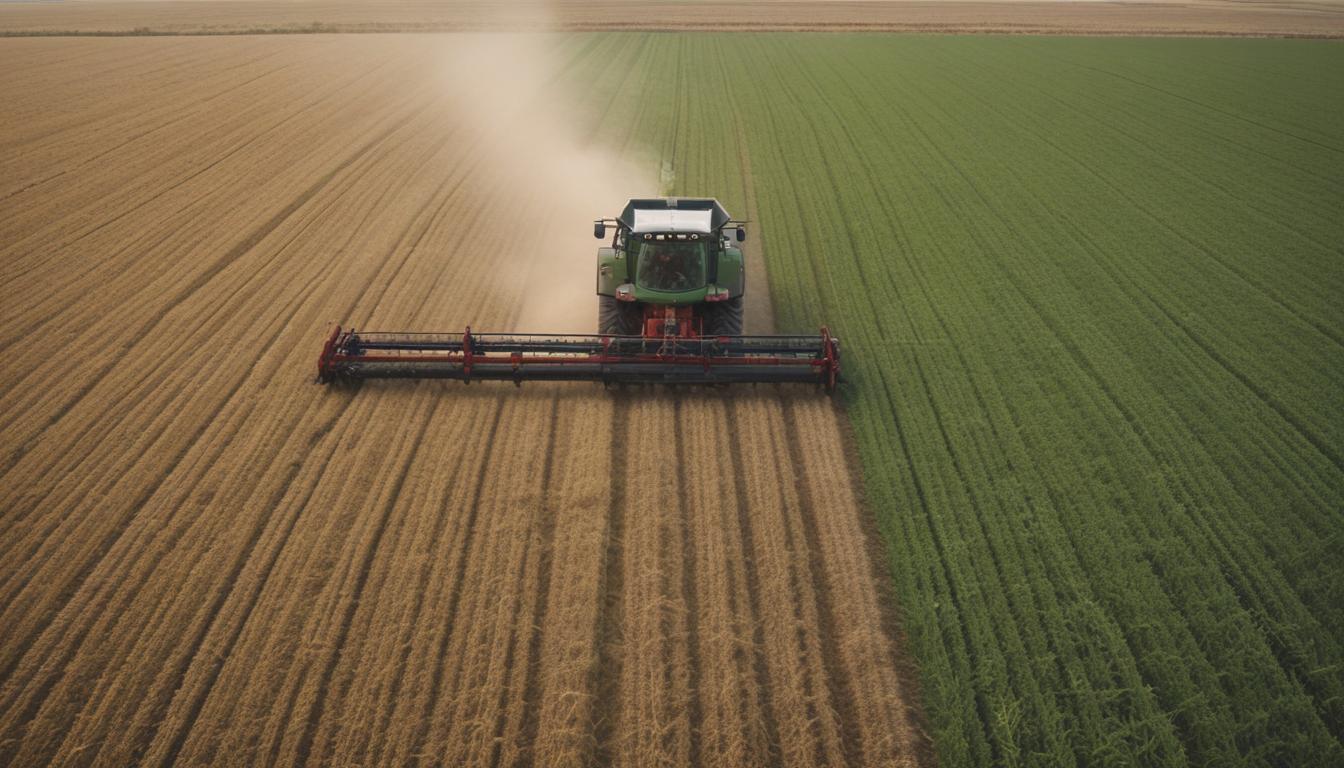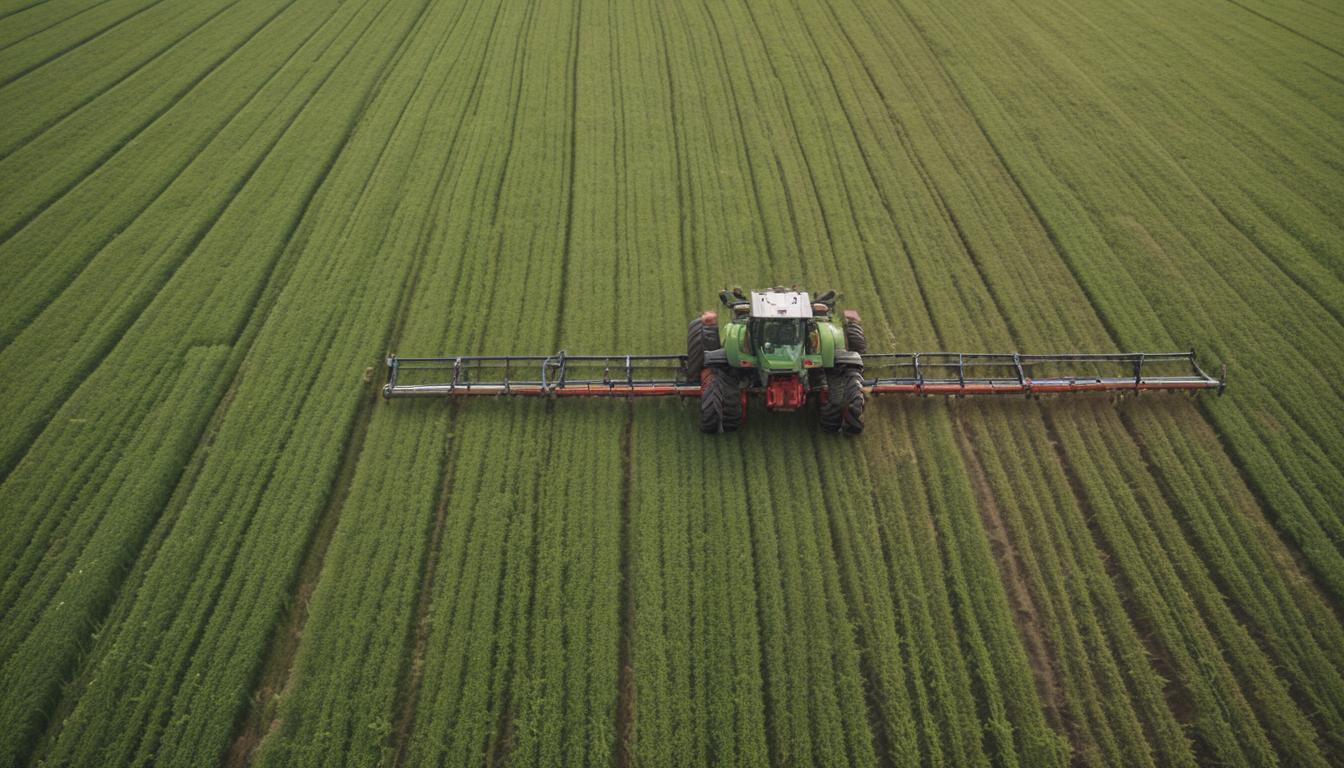Now Reading: Precision Ag The Future of Farm Tech
- 01
Precision Ag The Future of Farm Tech
Precision Ag The Future of Farm Tech

Precision Agriculture Technology for Farming
Are you constantly battling rising input costs, unpredictable weather, and the immense pressure to produce more with less? For many farmers, the margin for error is shrinking every year. Traditional farming methods, where you treat an entire field as a single unit, often lead to wasted resources—too much fertilizer here, not enough water there. This inefficiency eats into your profits and can be tough on the environment. What if you could move from guesswork to data-driven certainty, applying exactly what your crops need, precisely where they need it? The solution is here, and it’s transforming fields into smart, responsive ecosystems.
This is the world of precision agriculture, a farming management concept that uses advanced technology to observe, measure, and respond to variability within and between fields. By embracing these tools, you can turn your farm into a highly efficient, productive, and sustainable operation. It’s about working smarter, not just harder, to boost your yield, reduce costs, and secure your farm’s future for generations to come. This approach empowers you with the information needed to make the best decisions for every square foot of your land.
What is Precision Agriculture
At its core, precision agriculture is a strategic shift away from the one-size-fits-all approach. Instead of applying the same amount of seed, fertilizer, and water across an entire field, precision farming recognizes that different areas have unique needs. It uses a suite of technologies to identify these variations in soil type, nutrient levels, and moisture content, and then customizes treatment accordingly. Think of it as the difference between using a sledgehammer and a scalpel; it’s a targeted, highly accurate method that maximizes the potential of every part of your land.
The ultimate goal is to optimize returns on inputs while preserving resources. By creating a detailed, data-rich picture of your farm, you can make informed decisions that were previously impossible. This management style turns farming into a proactive science, reducing uncertainty and empowering farmers to control variables like never before. It’s not just about adding technology for its own sake; it’s about using that technology to create a more resilient, profitable, and environmentally friendly agricultural system that can meet the challenges of the future.

Core Technologies Driving the Farm of the Future
The revolution in precision agriculture is powered by several key technologies working in concert. These tools collect and analyze data, providing the insights needed to manage farm operations with unprecedented accuracy.
GPS and Guidance Systems
Global Positioning System (GPS) technology is the backbone of precision agriculture. High-accuracy GPS receivers installed on tractors and other farm machinery allow for precise field mapping, soil sampling, and guidance. Autosteer systems use this data to navigate equipment through the field with sub-inch accuracy, eliminating steering errors. This drastically reduces overlap during planting, spraying, and fertilizing, which immediately translates into significant savings on fuel, seed, and chemical costs.
Beyond just straight lines, these guidance systems enable complex farming patterns that contour to the land, optimizing water usage and preventing soil erosion. By precisely recording the location of every pass, GPS creates a foundational data layer upon which all other precision technologies can be built. It ensures that data collected from sensors and the actions taken by machinery are perfectly aligned, making every application as efficient as possible.
Drones and Remote Sensing
Unmanned Aerial Vehicles (UAVs), or drones, have become a farmer’s eye in the sky. Equipped with advanced cameras and multispectral sensors, drones can quickly survey vast areas and provide high-resolution imagery that reveals issues invisible to the naked eye. For instance, Normalized Difference Vegetation Index (NDVI) sensors measure plant health by capturing how plants reflect different light waves. This can help identify areas of stress from pests, disease, or nutrient deficiencies long before they become widespread problems.
This aerial intelligence allows for targeted scouting, saving immense time and labor. Instead of walking entire fields, you can send a drone to identify problem spots and then investigate them directly. The data collected can be processed into detailed maps that guide variable rate applications, ensuring that remedies like pesticides or specific nutrients are applied only where they are truly needed, protecting both your budget and the surrounding environment.
Variable Rate Technology (VRT)
Variable Rate Technology (VRT) is where the data becomes action. VRT equipment—such as seeders, sprayers, and fertilizer spreaders—is designed to automatically adjust the amount of input it applies based on data from GPS maps and sensors. A VRT system reads a digital prescription map and communicates with the equipment’s controller to change application rates on the go as it moves across the field.
For example, a prescription map created from soil sample data can tell a VRT spreader to apply more lime in acidic zones and less in areas with optimal pH. Similarly, a VRT seeder can increase the seed population in highly fertile areas of a field and decrease it in less productive zones, ensuring that every seed has the best possible chance to thrive. This level of granular control is the key to unlocking a field’s full potential, maximizing yield while minimizing waste.
The Tangible Benefits of Farming Smarter
Adopting precision agriculture isn’t just an investment in new equipment; it’s an investment in a more profitable and sustainable future. The financial benefits are clear and direct. By applying inputs only where they are needed, you significantly cut costs on fertilizer, pesticides, herbicides, and fuel. At the same time, optimizing crop health and planting density on a zone-by-zone basis leads to higher yields and better-quality crops, directly boosting your revenue.
Beyond the balance sheet, the environmental advantages are profound. Precision application drastically reduces the risk of chemical runoff into rivers and groundwater, protecting local ecosystems. More efficient use of nitrogen fertilizer lowers nitrous oxide emissions, a potent greenhouse gas. Furthermore, optimized water management helps conserve one of our most precious resources, which is especially critical in drought-prone regions. This commitment to stewardship not only ensures the long-term health of your land but also strengthens your farm’s reputation in a world that increasingly values sustainable practices.


































